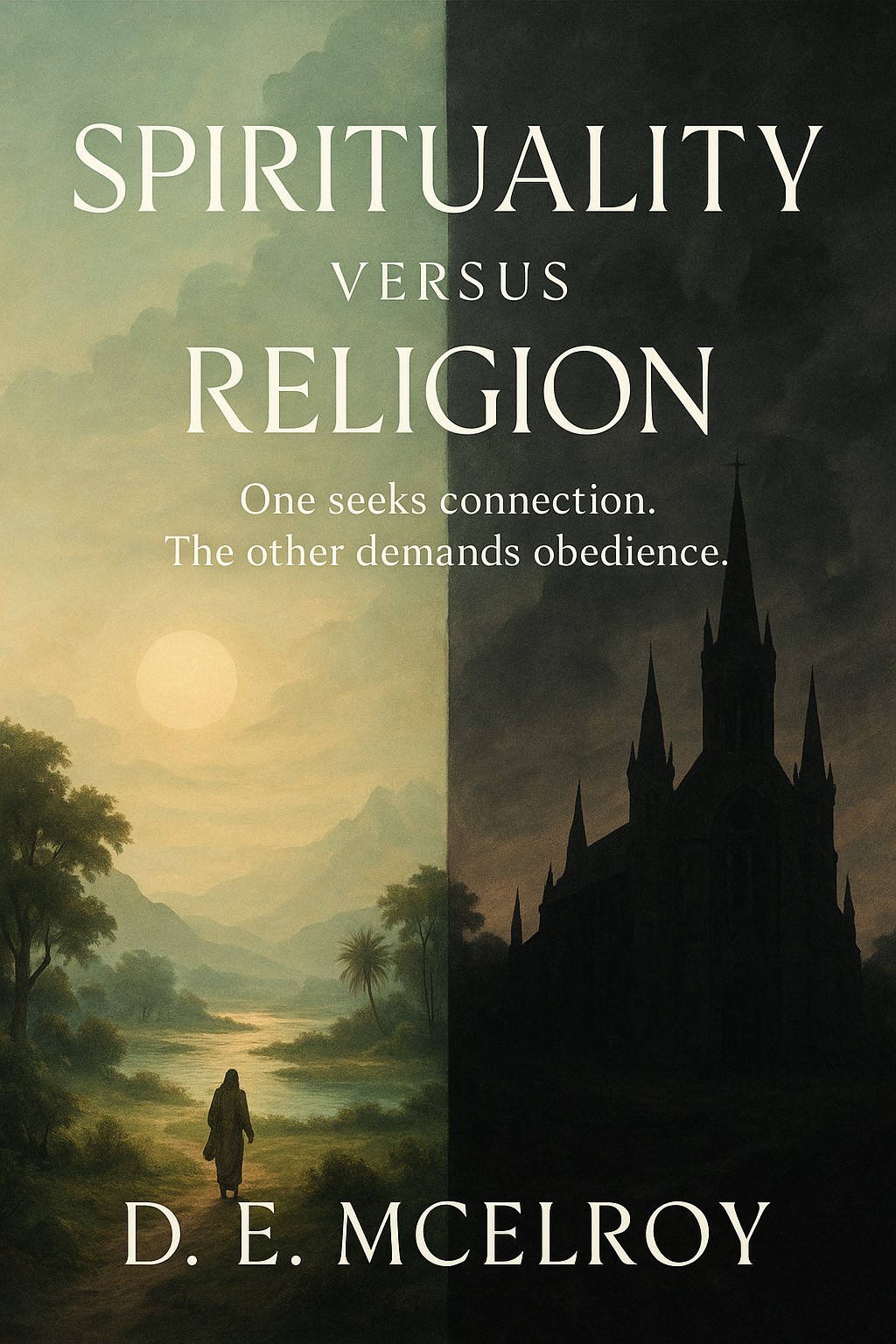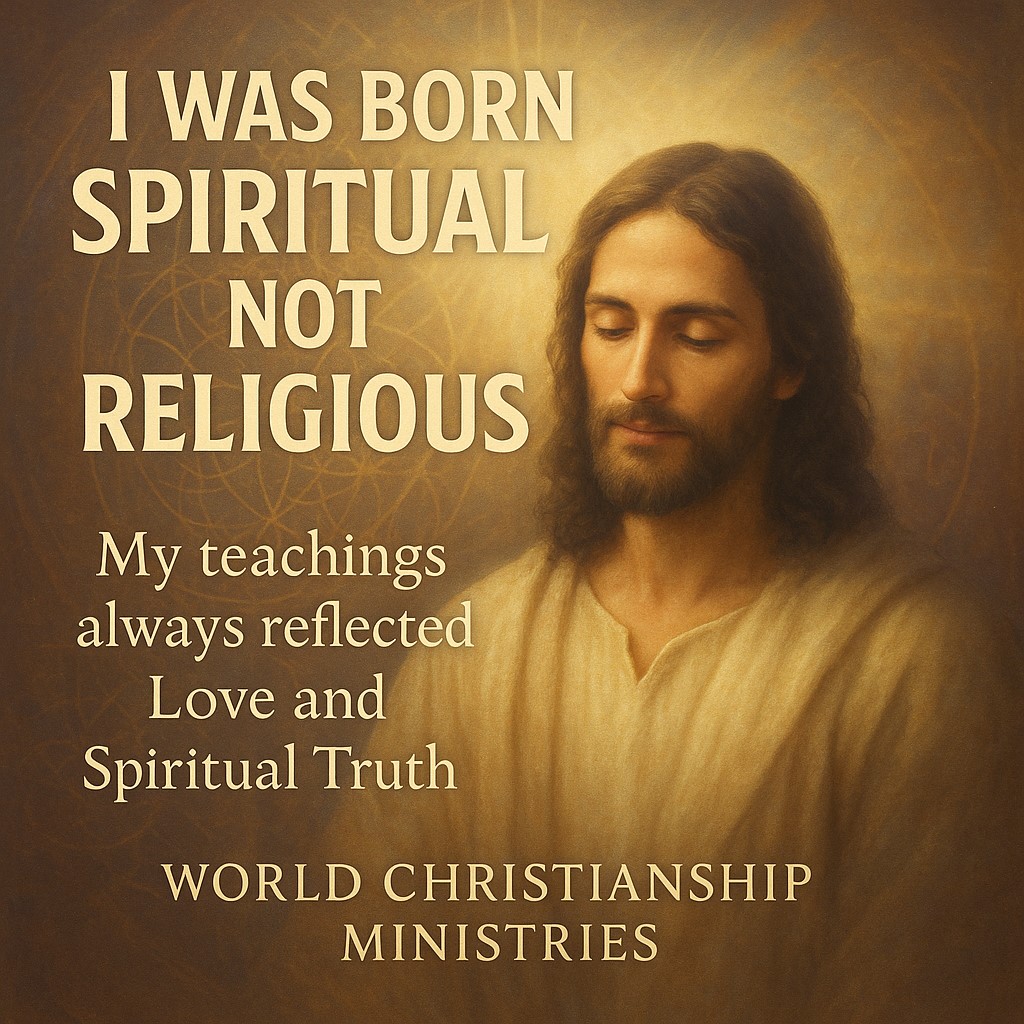

Here's a detailed comparison of Spirituality and Religion, focusing on their core differences, similarities, expressions, structures, and historical roots.
🌟 Spirituality vs. Religion: A Detailed Comparison
| Aspect | Spirituality - Jesus (Yeshua) was Spiritual |
Religion |
|---|---|---|
| Definition | A personal, inner journey seeking meaning, purpose, connection with the Divine, or higher consciousness. | An organized system of beliefs, practices, rituals, and moral codes centered around worship of a deity or deities. |
| Source of Authority | Inner experience, personal intuition, direct insight (e.g., through meditation, contemplation, or NDEs). | External sources: sacred texts, religious leaders, church traditions, institutional hierarchy. |
| God / The Divine | Often viewed as immanent, formless, and within all things. God is love, light, or universal consciousness. | Usually a defined deity or deities, often anthropomorphic. God may be transcendent and separate from creation. |
| Path to Truth | Individual and experiential; “truth” is discovered through inner awakening and direct connection with the Divine. | Institutional and doctrinal; “truth” is taught through scriptures, creeds, and church authority. |
| Practices | Meditation, contemplation, mindfulness, nature walks, sacred silence, creative expression, and personal prayer. | Rituals, group prayer, sacraments, fasting, holy days, attending religious services. |
| View of Afterlife | Often based on energy, consciousness, or reincarnation; the soul evolves. Afterlife may be symbolic. | Heaven, hell, judgment, resurrection, or reincarnation (depending on the tradition). Afterlife often described in literal terms. |
| Sin and Morality | "Sin" is seen more as ignorance or disconnection from one’s true self or Source. Focus is on awareness and growth. | Sin is a moral transgression or offense against divine law; redemption often requires repentance, ritual, or faith. |
| Inclusivity | Broadly inclusive, universal. Sees all paths as potentially valid. Emphasis on unity and shared humanity. | Often exclusive. One religion may claim to have the sole truth, and outsiders may be seen as “lost” or in error. |
| Structure and Hierarchy | Typically non-hierarchical. Few or no formal leaders. Emphasis on direct personal experience. | Often hierarchical. Roles include clergy, elders, popes, rabbis, imams, etc. Institutional authority is respected. |
| Language and Symbols | Metaphorical, symbolic, and intuitive. Symbols are tools, not absolutes. | Formal, literal, and traditional. Symbols and sacred texts are often interpreted as historical or divine mandates. |
| Approach to Mystery | Embraces mystery, uncertainty, paradox, and the unknowable. Mystery is part of the journey. | Seeks to explain mystery through doctrine. Faith may involve accepting mystery within a defined framework. |
| View of Other Faiths | Tends to be pluralistic and open to wisdom from all traditions. | May discourage exploration outside its own boundaries; other paths may be considered incorrect or heretical. |
| Motivation | Personal growth, inner peace, self-realization, love-based living, unity with all. | Obedience to divine law, salvation, reward in afterlife, fulfilling religious duty. |
🔍 Key Similarities
| Shared Element | Expression in Spirituality | Expression in Religion |
|---|---|---|
| Search for meaning | Through self-awareness and inner connection. | Through stories, doctrines, rituals, and scripture. |
| Connection to the Divine | Personal and direct, often without intermediaries. | Mediated through clergy, sacred texts, or communal worship. |
| Moral guidance | Comes from within, informed by empathy, conscience, and love. | Comes from commandments, rules, and sacred teachings. |
| Community (sometimes) | Spiritual groups, retreats, or informal gatherings. | Congregations, churches, temples, mosques, synagogues. |
| Sacredness | Found in nature, silence, art, and human experience. | Found in holy books, sacraments, sacred places, rituals. |
🧠 Historical Origins and Evolution
| Spirituality | Religion |
|---|---|
| Ancient shamans and mystics across all cultures engaged in direct experiences of the Divine without formal systems. | Religion developed as spiritual experiences became formalized, organized, and institutionalized to unify tribes and societies. |
| Gnostics, Yogis, Sufis, and Christian mystics (like Meister Eckhart) embody early spiritual movements. | Institutional religions like Judaism, Christianity, Islam, Buddhism, and Hinduism codified doctrines and rituals. |
| Often suppressed by institutions (e.g., the Gnostic texts were banned, mystics were excommunicated or killed). | Grew into state-backed institutions and formal centers of power. |
🔥 Modern Shifts: “Spiritual but Not Religious” (SBNR)
In recent decades, more people identify as Spiritual But Not Religious — valuing inner experience over organized belief. This includes:
-
NDE researchers and experiencers (Perhaps like yourself).
-
People leaving rigid churches for more open-minded paths.
-
Seekers drawn to mysticism, nature, energy healing, and personal gnosis (Learning).
📜 Famous Quotes to Illustrate
-
Religion is for people who are afraid of going to hell. Spirituality is for those who have already been there. – Anonymous
-
The kingdom is inside you, and it is outside you. – Gospel of Thomas (Nag Hammadi)
-
True religion is real living; living with all one’s soul, with all one’s goodness and righteousness. – Albert Einstein
-
Spirituality does not come from religion. It comes from our soul. – Anthony Douglas Williams
WCM International Music Page Sins Page Animal Lovers Page Our Earth Today Page